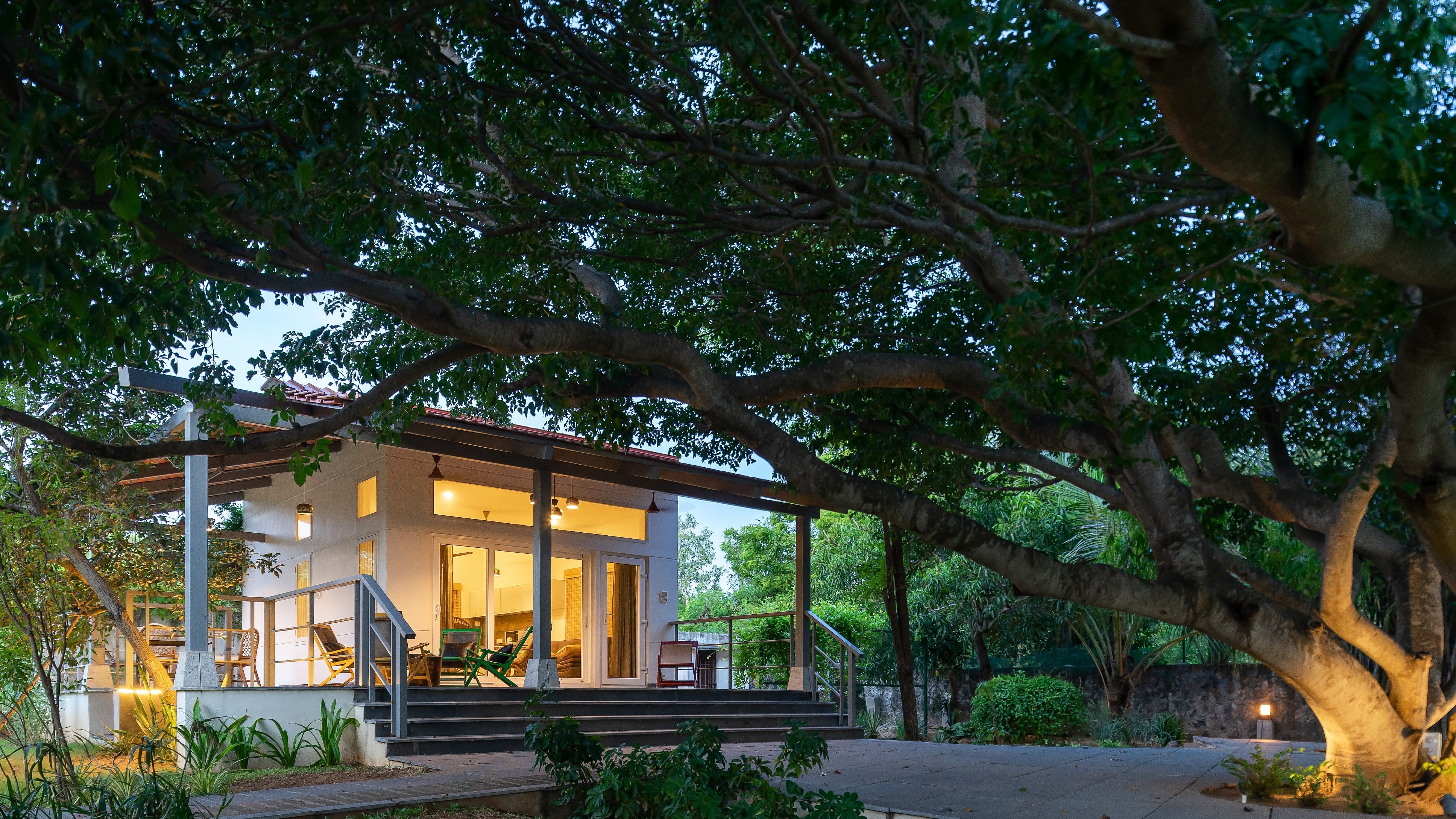
A home in Chennai revamped by SKDO, Chennai, to create a better connect between the indoors and outdoors.
Credit: Special arrangment
With an increasing number of people choosing to live in independent houses over apartments, architects have been tasked with renovating ancestral homes.
Transforming an old residence into a modern space demands striking a balance between its historical charm and updating it to fulfil modern needs.
Architects explain how this can be achieved.
Preparation is key
The first step is to inspect the entire space and check for leaks, cracks, plumbing, and electrical problems. “After that, we tear down what needs to go before starting any new construction or aesthetic enhancements. It’s crucial to preserve the beauty of the old house by avoiding unnecessary demolition and by retaining as many original elements as possible,” says Sushmi S, principal architect and founder of Alora Designs, Bengaluru.
Old features can be enhanced by remodelling or polishing them. Take, for instance, old walls. “Given the age of the walls, heavy cladding may not be suitable (to give them a facelift). And before adding wallpaper, we need to prep old walls by filling in cracks, removing old putty, and applying a fresh coat of putty, primer, and paint,” she explains.
Laying new flooring directly over existing tiles saves time and energy while maintaining stability. Sushmi recommends Stone Polymer Composite (SPC) flooring — it looks like wood and is a practical choice for an old house where termite issues could arise.
Amirah Ahamed, principal architect with Bodhi Design Studio, Bengaluru, cites an example of how she upgraded a 40-year-old home in the city. “It started with planning the layout and selecting flooring. Layers like walls, furniture, soft items, and decorations were then added. The classic tall ceilings were retained, and stained glass was added to hexagonal windows,” she illustrates. The living room underwent restyling, where the entertainment area was separated from the gathering area by a sliding folding door. Her studio opted for lightweight concrete blocks as it doesn’t harm a building’s structure.
Remove boxiness
In Varthur, Bengaluru, Sushmi transformed an unused home of over 25 years, while retaining most of its original structure. “Only the partition walls were modified and larger windows were installed for more light,” she notes. In the old layout, the living room was separated into two zones — a bar area and a seating area. “We removed the partition wall, creating an expansive living room that is perfect for hosting gatherings. Additionally, we introduced a raised platform to create a visual distinction between the two zones,” she says. Instead of introducing false ceilings, the house’s sloped tall roofing design was retained. “This helped ensure continuity with the house’s original charm,” she adds.
At a 30-year-old home in Delhi, Anuj Kapoor, principal architect and founder of Logic Design+Build, Gurugram, wanted to create an open space. “We removed some walls inside and added new structural elements to support the upper level. Arches were added for both support and style,” he notes. To achieve a contemporary look, a spatial feature that breaks away from compartmentalised rooms was created. “The partition using fluted glass blocks between the living and study areas now allows sunlight into the living room. It didn’t have windows before. Making most of the space and letting in natural light, has helped make the area look bigger than it is,” he adds.
Prioritise emotions
Spoorti Kabbur, principal architect with Kabbur Architects, Hubballi, undertook the redesign of a home aged over 30 years, prioritising the emotional connection its owners have with the space. “Originally, both floors of the house were similar looking but a double height was added between the ground floor and the first floor. When planning renovation projects, two factors are considered: the family’s aspirations and the stability of the existing structure. Understanding what the family wants is crucial, as it is often driven by a sentimental attachment to the building. Assessing the stability involves various processes, like rebound tests. We usually advise demolishing and rebuilding very old structures,” she notes.
Spoorti is currently working on an 85-year-old building, which has thick limestone walls, in Badami, Karnataka. “The family wants to maintain its retro charm. This renovation work here will need a balance between preserving history and addressing structural concerns,” she adds.
Blend with surroundings
In Turuvekere, Karnataka, Vinay Mavinakere, principal architect at Bengaluru-based Sudaiva Studio, drew inspiration from the view around while renovating a house. To enhance the space, another level was added using steel beams for structural support. “The facade featuring terracotta jali, helps establish a connection with the surrounding traditional Mangalore tile roof houses,” he adds.
A Chennai-based holiday home was renovated by Shreya Krishnan, principal architect of Shreya Krishnan Design Office (SKDO), Chennai, to connect better with its surroundings. “We kept the original structure but adjusted openings, windows, and access points. Sit-outs were added to make the existing space more functional.” The property has a large shady tree in the front. “After reworking the layout, the residents can now relax under the tree and appreciate the garden view,” she says. The entire building was retained as it was, and windows were added where needed.
Wallet factor
Set aside a budget of Rs 25 to 90 lakhs depending on the design.